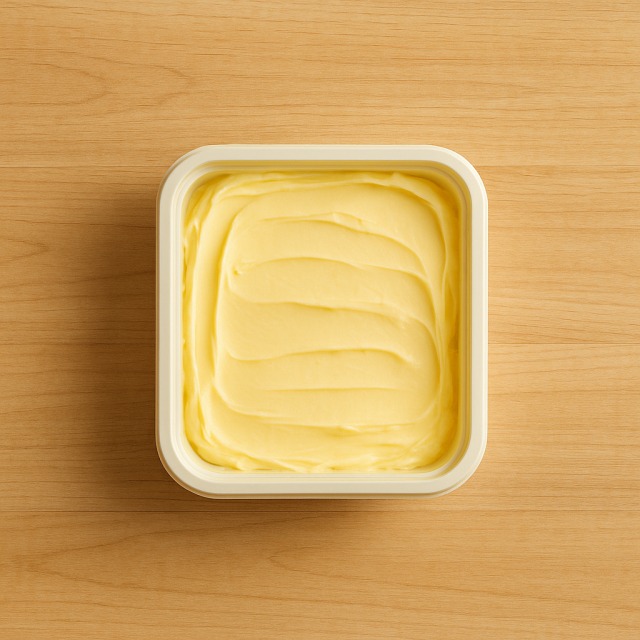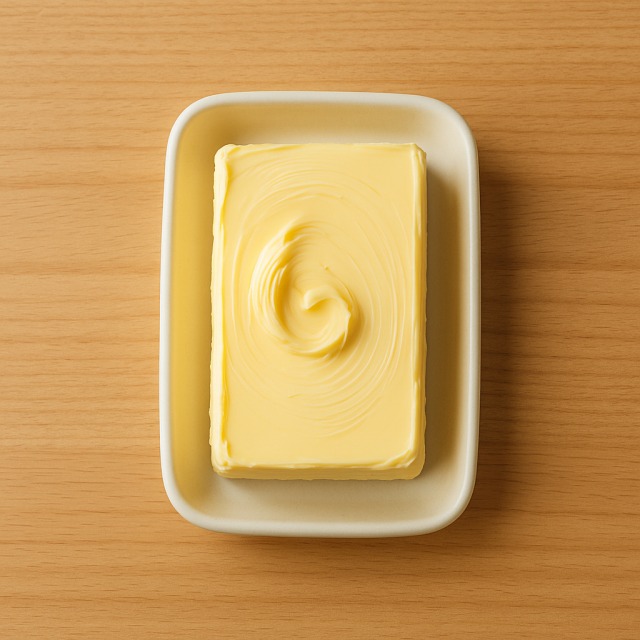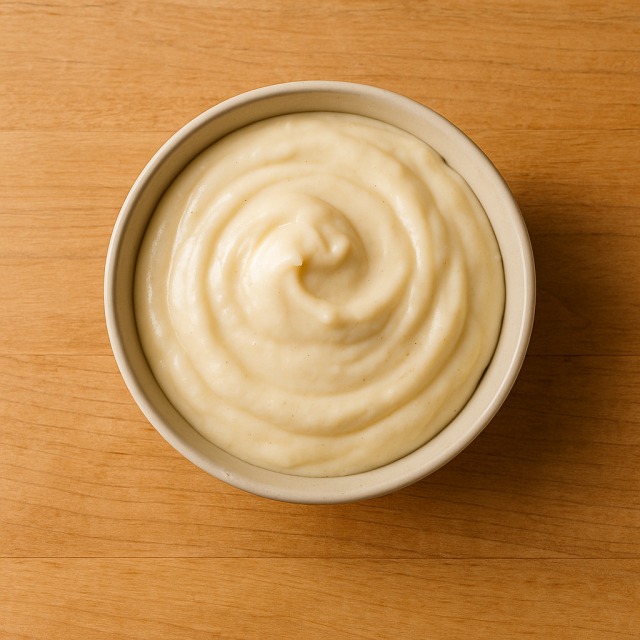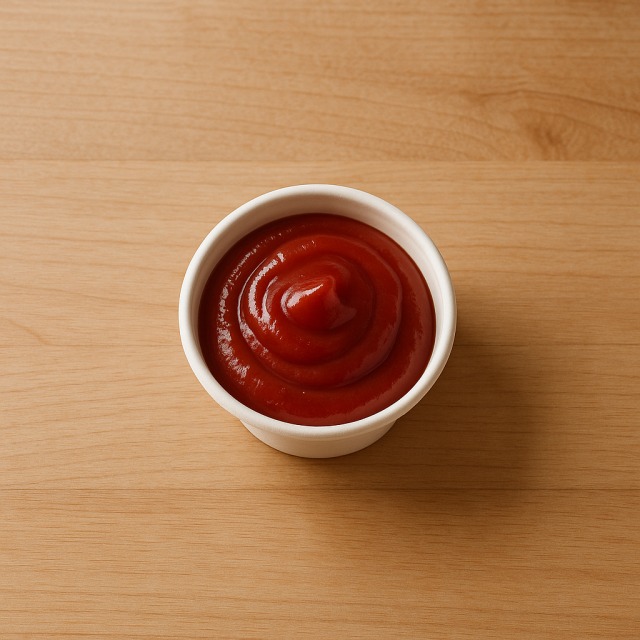Calorie Chart / Seasoning & Sauces / Butter
How Many Calories Are in Butter?
Calculation of the nutritional value & Recommended Dietary Intake of butter
For g and a calorie requirement of kcal
| Calories 75 kcal | Proteins 0 g | Lipids 8.3 g | Carbohydrates 0 g |
| 4% | 0% | 12% | 0% |
Health benefits of butter
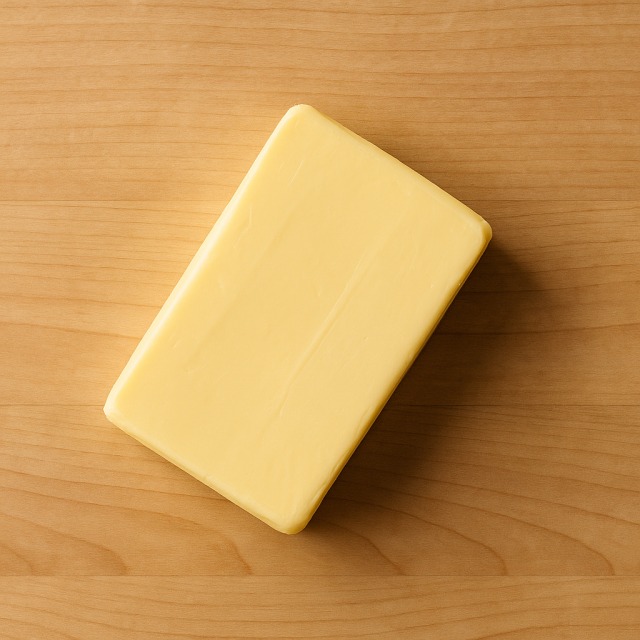
Butter - 100g
Calories 750 kcal
Proteins 0.4 g
Lipids 83 g
Carbohydrates 0.4 g
Butter is a high-calorie ingredient: even a 10 g pat adds roughly 75 calories, so its calories accumulate quickly. Despite this energy density, butter delivers fat-soluble vitamins A, D, E, and K, all of which need dietary fat for optimal absorption. Vitamin A supports vision and immune function, while vitamin D helps regulate calcium metabolism and bone health.
The milk fat in butter contains the short-chain fatty acid butyrate, studied for its potential role in maintaining intestinal barrier integrity. It also supplies conjugated linoleic acid (CLA), whose effect on body composition is still "supposed" rather than proven. Because its lipids are almost exclusively saturated, butter melts at mouth temperature and gives sauces such as Béarnaise sauce or a classic Mornay sauce their characteristic texture—another reason it remains popular despite its calories.
Historically, butter was so prized in Northern Europe that it was accepted as payment of taxes during the Middle Ages. Today, chefs still use a final knob of butter—called "monté au beurre"—to bring shine and flavor to dishes like croissant dough or sautéed asparagus. In short, butter is caloric but nutritionally dense in certain micronutrients when enjoyed in small portions.
Tips for incorporating butter into a balanced diet
Because butter concentrates calories, portion control is crucial. Spread a thin 5 g layer (about a teaspoon, 37 calories) on a slice of wholemeal bread and top with fresh apple slices for a quick snack rich in fiber that helps moderate total calories. At breakfast, pair one buttered toast with a protein source such as a soft-boiled egg and a fruit like banana; the combination tempers the blood sugar rise and keeps overall calories reasonable.
For cooking, mix half butter and half vegetable oil when pan-searing fish such as salmon. The oil raises the smoke point, allowing you to use less butter and therefore fewer calories while retaining flavor. Another balanced idea is to finish steamed broccoli with just 3 g of melted butter, lemon zest, and parsley—plenty of taste for minimal added calories.
Bakers can reduce calories in desserts by replacing one-third of the butter in recipes like brownie or muffin with puréed fruit. If you simply want a lower-fat spread, consider alternating with light margarine; the mouthfeel is similar, but you cut calories per serving.
Frequently Asked Questions
- How many calories are in butter?
- Butter provides about 750 kcal per 100 g.
- Is butter good or bad for weight loss?
- Butter is calorie-dense and supplies 83 g of fat per 100 g; successful weight-loss plans usually limit it to small amounts so daily calories stay in check.
- How much butter can I eat per day without exceeding my calories?
- If you follow a 2,000 kcal diet, capping butter at 10–15 g (75–110 kcal) keeps saturated fat within widely recommended limits while leaving room for calories from other foods.
- Does clarified butter (ghee) have fewer calories than regular butter?
- No. Ghee has virtually the same calories—around 750–760 kcal per 100 g—because water and milk solids are removed, leaving almost pure fat.
- Can lactose-intolerant people eat butter?
- Butter contains only trace lactose, so many lactose-intolerant individuals tolerate it; however, clarified butter contains even less. Always monitor your own tolerance.
- Is butter richer in calories than whipped cream?
- Yes. Whipped cream averages 290 kcal per 100 g, far below butter's 750 kcal. The difference can be significant when you tally total calories.
Similar foods
Information provided by Calorie Menu may contain inaccuracies or errors. It cannot, under any circumstances, substitute medical advice or medication.

